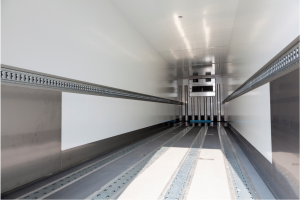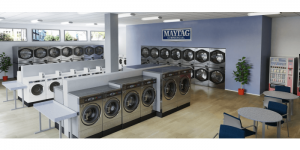Disadvantages of Cold Storage: When Cold Isn’t Always Cool
Introduction
Cold storage is an essential component of many industries, ranging from food preservation to pharmaceuticals and data storage. While it offers numerous benefits, including extending the shelf life of products and maintaining the integrity of sensitive materials, it is not without its drawbacks. In this article, we will explore the disadvantages of cold storage and the challenges that come with keeping things cool.
The Energy Guzzler: High Operational Costs
One of the most significant disadvantages of cold storage is its high operational costs. Maintaining a consistently low temperature requires a significant amount of energy, often making cold storage facilities among the largest consumers of electricity in a given area. This increased energy consumption not only impacts the environment but also drives up operational expenses for businesses.

Energy Efficiency Solutions
To mitigate this drawback, companies are increasingly investing in energy-efficient cold storage technologies. These include advanced insulation materials, LED lighting systems, and smart climate control systems that optimize temperature settings based on real-time data. While these innovations can help reduce energy consumption, the initial investment required can still be substantial.
Space Constraints: The Need for Room
Cold storage facilities are space-intensive. The need for insulated walls and temperature control systems reduces the available storage area. This limitation can be particularly challenging for businesses with limited physical space.
Maximizing Space
To make the most of the available space, organizations often implement high-density storage systems and efficient shelving designs. Additionally, proper inventory management and rotation strategies are crucial to ensure that valuable space is not wasted on items that are past their shelf life.
Maintenance Challenges: Cooling Systems Require TLC
Cold storage facilities rely on complex cooling systems that require regular maintenance. These systems include compressors, evaporators, and condensers, which can be prone to wear and tear. When not properly maintained, they can break down, leading to costly repairs and downtime.
Preventive Maintenance
To address this disadvantage, businesses must establish a robust preventive maintenance program. Regular inspections, cleaning, and servicing of cooling equipment can help prevent breakdowns and extend the lifespan of these critical components.
Temperature Fluctuations: The Enemy of Perishables
While cold storage is designed to maintain a consistent low temperature, it is not immune to temperature fluctuations. Power outages or equipment malfunctions can lead to brief spikes in temperature, which can be disastrous for perishable goods.
Backup Power Systems
To mitigate this risk, many cold storage facilities invest in backup power systems, such as generators or uninterruptible power supplies (UPS). These systems can provide temporary relief during power disruptions, allowing businesses to maintain temperature control until normal operations are restored.
Environmental Impact: The Cold Storage Carbon Footprint
Cold storage’s significant energy consumption also contributes to its environmental impact. The electricity needed to maintain low temperatures often comes from non-renewable sources, leading to increased carbon emissions.
Sustainable Practices
To address this issue, businesses are increasingly adopting sustainable practices in cold storage operations. This includes sourcing electricity from renewable sources, improving insulation materials to reduce energy requirements, and exploring alternative refrigeration technologies that are less harmful to the environment.

Inventory Management Complexity
Managing inventory in cold storage can be more complex than in traditional storage facilities. The need to monitor temperature-sensitive products, track expiration dates, and ensure proper rotation adds layers of complexity to logistics and inventory management.
Inventory Tracking Solutions
To streamline these processes, many businesses employ advanced inventory management software and RFID (Radio-Frequency Identification) systems. These technologies provide real-time visibility into inventory levels and help ensure that products are rotated based on their shelf life, reducing the risk of spoilage.
Health and Safety Concerns
Working in a cold storage facility can pose health and safety risks to employees. Prolonged exposure to low temperatures can lead to cold stress, which can result in frostbite and other cold-related injuries. Additionally, the operation of heavy machinery and forklifts in cold conditions increases the risk of accidents. Read about us here.
Employee Safety Measures
To address these concerns, businesses must prioritize employee safety. This includes providing appropriate protective gear, implementing safety training programs, and designing ergonomic workspaces to reduce the risk of accidents and injuries.
Conclusion: Balancing the Cold Equation
Cold storage is undeniably valuable for preserving perishable goods and sensitive materials, but it comes with its share of disadvantages. High operational costs, space constraints, maintenance challenges, temperature fluctuations, environmental impact, inventory complexity, and health and safety concerns are all factors that businesses must consider when utilizing cold storage.
However, with advancements in technology and a commitment to sustainability, many of these disadvantages can be mitigated. Businesses that carefully manage their cold storage facilities, invest in energy-efficient solutions, and prioritize safety can strike a balance between the advantages and drawbacks of cold storage, ensuring that “cold” remains cool when it comes to preserving what matters most.

Recent Comments